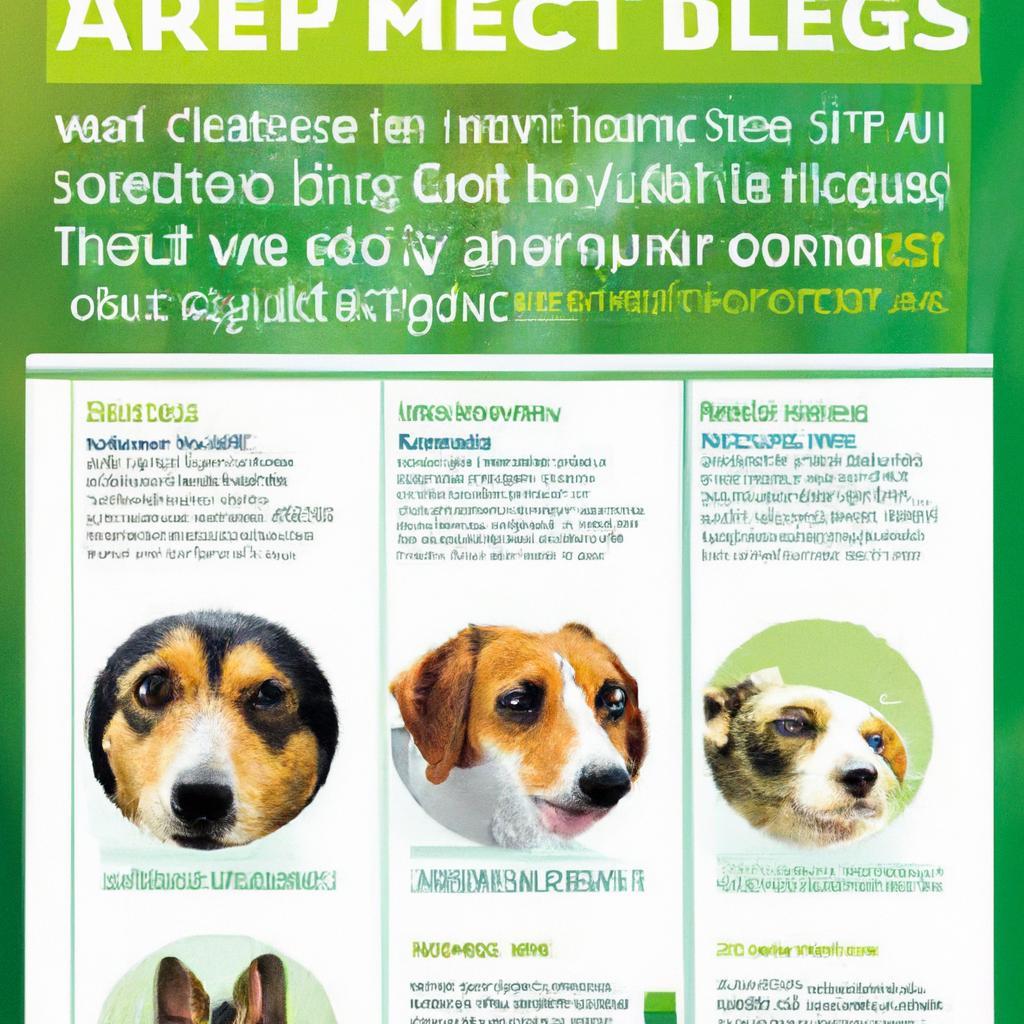Meet Max, a gentle giant who stands tall at 30 inches and weighs over 100 pounds. As a Standard Poodle, he’s not just impressive in size; he’s also one of the biggest hypoallergenic dogs around. Max’s curly coat traps dander and hair, making him a perfect companion for allergy sufferers. His playful nature and intelligence make him an ideal family pet. If you’re seeking a large, loving dog that won’t trigger allergies, consider the Standard Poodle. With Max, you can enjoy the best of both worlds—size and sensitivity!
Contents
- Understanding Hypoallergenic Dogs and Their Appeal
- Identifying the Largest Hypoallergenic Breeds
- Evaluating Temperament and Care Needs of Large Hypoallergenic Dogs
- Making an Informed Choice: Recommendations for Potential Owners
- Q&A
Understanding Hypoallergenic Dogs and Their Appeal
When it comes to choosing a dog, many potential pet owners are concerned about allergies. Hypoallergenic dogs are often seen as the solution for those who love canines but suffer from allergies. These breeds are known for producing fewer allergens, making them more suitable for allergy sufferers. However, it’s essential to understand that no dog is entirely hypoallergenic; rather, these breeds tend to produce less dander and saliva, which are the primary culprits behind allergic reactions.
One of the most appealing aspects of hypoallergenic dogs is their versatility in size and temperament. From small companions to larger, more robust breeds, there is a hypoallergenic option for everyone. Some popular breeds include:
- Poodle – Available in standard, miniature, and toy sizes, Poodles are intelligent and highly trainable.
- Bichon Frise – Known for their cheerful disposition, these small dogs are affectionate and great for families.
- Portuguese Water Dog – Energetic and friendly, they make excellent companions for active individuals.
- Soft Coated Wheaten Terrier – With their soft, silky coats, they are both charming and hypoallergenic.
In addition to their allergy-friendly qualities, these dogs often possess unique characteristics that make them highly desirable. Many hypoallergenic breeds are known for their friendly and sociable nature, making them excellent family pets. Their lower shedding means less cleaning and maintenance, which is a significant advantage for busy households. Furthermore, the bond formed with a hypoallergenic dog can be incredibly rewarding, as they often thrive on human interaction and companionship.
Ultimately, the appeal of hypoallergenic dogs lies not only in their reduced allergenic properties but also in their ability to fit seamlessly into various lifestyles. Whether you’re a busy professional, a family with children, or someone looking for a loyal companion, these breeds offer a perfect blend of companionship and practicality. By choosing a hypoallergenic dog, you can enjoy the joys of pet ownership without the constant worry of allergy flare-ups.
Identifying the Largest Hypoallergenic Breeds
When searching for a hypoallergenic dog, size can play a significant role in your decision-making process. Many people assume that smaller breeds are the only options available, but there are several larger breeds that are also known for their hypoallergenic qualities. These dogs not only provide companionship but also cater to those who may suffer from allergies, making them ideal for families and individuals alike.
Among the larger hypoallergenic breeds, the **Standard Poodle** stands out as a popular choice. Known for their intelligence and trainability, Standard Poodles can weigh between 40 to 70 pounds. Their curly coats trap dander and hair, preventing it from spreading in the home. Additionally, they come in various colors and have a playful demeanor, making them a delightful addition to any household.
Another impressive breed is the **Irish Water Spaniel**, which can weigh up to 65 pounds. This breed is not only hypoallergenic but also boasts a unique, curly coat that requires regular grooming. Their energetic and friendly nature makes them excellent companions for active families. The Irish Water Spaniel is known for its loyalty and intelligence, making training a rewarding experience.
Lastly, the **Giant Schnauzer** is a remarkable hypoallergenic breed that can weigh between 55 to 85 pounds. With their distinctive bearded face and robust build, they are both striking and functional. Giant Schnauzers are known for their protective instincts and are often used as working dogs. Their low-shedding coat requires regular grooming, but the effort is well worth it for those seeking a larger, hypoallergenic companion.
Evaluating Temperament and Care Needs of Large Hypoallergenic Dogs
When considering a large hypoallergenic dog, it’s essential to evaluate their temperament and care needs to ensure a harmonious match with your lifestyle. These breeds often exhibit a range of personalities, from the gentle giant to the playful companion. Understanding their innate characteristics can help you choose a dog that fits seamlessly into your home. For instance, breeds like the Standard Poodle and the Portuguese Water Dog are known for their friendly and intelligent nature, making them excellent family pets.
Large hypoallergenic dogs typically require consistent training and socialization to thrive. Their size can be intimidating, but with the right guidance, they can be well-mannered and obedient. **Positive reinforcement** techniques work wonders with these breeds, encouraging them to learn commands and develop good behavior. Additionally, early socialization with various people, pets, and environments is crucial to prevent any behavioral issues as they grow. A well-socialized dog is not only more enjoyable to be around but also more adaptable to different situations.
In terms of care, large hypoallergenic dogs often have specific grooming needs that must be addressed regularly. Their coats may require frequent brushing to prevent matting and to control shedding, even if they are considered hypoallergenic. **Regular grooming** sessions not only keep their fur in top condition but also provide an opportunity for bonding between you and your pet. Moreover, maintaining their dental hygiene and ensuring they receive adequate exercise are vital components of their overall health and well-being.
it’s important to consider the energy levels of these breeds. Many large hypoallergenic dogs are active and require daily exercise to stay healthy and happy. Engaging them in activities such as long walks, playtime in the yard, or even dog sports can help channel their energy positively. **Creating a structured routine** that includes physical and mental stimulation will not only keep your dog fit but also strengthen the bond you share. By understanding their temperament and care needs, you can provide a loving and supportive environment that allows your large hypoallergenic dog to flourish.
Making an Informed Choice: Recommendations for Potential Owners
When considering the addition of a hypoallergenic dog to your family, it’s essential to evaluate various factors that will contribute to a harmonious living environment. First and foremost, potential owners should research the specific breeds known for their hypoallergenic qualities. Breeds such as the **Poodle**, **Bichon Frise**, and **Portuguese Water Dog** are often recommended due to their low-shedding coats and minimal dander production. Understanding the characteristics of these breeds will help you make a choice that aligns with your lifestyle and preferences.
Another critical aspect to consider is the dog’s temperament and energy level. Hypoallergenic dogs come in various sizes and personalities, so it’s vital to select one that fits your household dynamics. For instance, if you have an active family, a **Miniature Schnauzer** or a **Soft Coated Wheaten Terrier** might be ideal due to their playful nature. Conversely, if you prefer a more laid-back companion, breeds like the **Basenji** or **Shih Tzu** could be a better match. Assessing your daily routine and activity level will guide you in choosing a dog that complements your lifestyle.
Additionally, potential owners should consider grooming requirements, as many hypoallergenic breeds demand regular maintenance to keep their coats healthy and free from matting. Investing time in grooming not only enhances the dog’s appearance but also minimizes allergens in your home. Breeds like the **Yorkshire Terrier** and **Maltese** require frequent brushing and occasional professional grooming, so be prepared to incorporate these tasks into your schedule. Understanding the grooming needs of your chosen breed will ensure that you can provide the necessary care.
Lastly, it’s crucial to evaluate your living situation and any allergies among family members. While hypoallergenic dogs are less likely to trigger allergic reactions, individual sensitivities can vary. Spend time with the breed you are considering to gauge any potential reactions before making a commitment. Consulting with breeders or shelters about the specific dog’s history and temperament can also provide valuable insights. By taking these steps, you can confidently choose a hypoallergenic dog that will thrive in your home and bring joy to your family.
Q&A
-
What is the biggest hypoallergenic dog breed?
The largest hypoallergenic dog breed is the Giant Schnauzer. This impressive breed can weigh between 55 to 85 pounds and stands 23.5 to 27.5 inches tall. Their low-shedding coat makes them a great choice for allergy sufferers.
-
Are hypoallergenic dogs completely allergy-free?
No, hypoallergenic dogs are not completely allergy-free. They produce fewer allergens compared to other breeds, but individuals with allergies may still react. It’s essential to spend time with a breed before bringing one home to assess your reaction.
-
What are some other large hypoallergenic breeds?
In addition to the Giant Schnauzer, other large hypoallergenic breeds include:
- Standard Poodle
- Irish Water Spaniel
- Lagotto Romagnolo
These breeds also have low-shedding coats and are known for their friendly temperaments.
-
How can I reduce allergens in my home with a hypoallergenic dog?
To minimize allergens, consider the following:
- Regular grooming and bathing of your dog
- Using air purifiers to filter out allergens
- Establishing pet-free zones in your home
- Vacuuming frequently with a HEPA filter
Implementing these practices can help create a more comfortable environment for allergy sufferers.
choosing the right hypoallergenic dog can transform your life, offering companionship without the worry of allergies. Consider the breeds discussed, and take the first step toward a healthier, happier home with a furry friend by your side.

大家好,我是彼得潘,專業的手法身體治療師。我喜歡探索和研究各種主題,並透過與人工智慧的合作分享專業、實用、有趣的文章。我們定期進行人工審核,以確保內容的準確性。如果您發現文章中有任何不準確的地方,請隨時與我們聯繫,我們會及時糾正。您可以透過 [email protected] 與我們聯繫。



